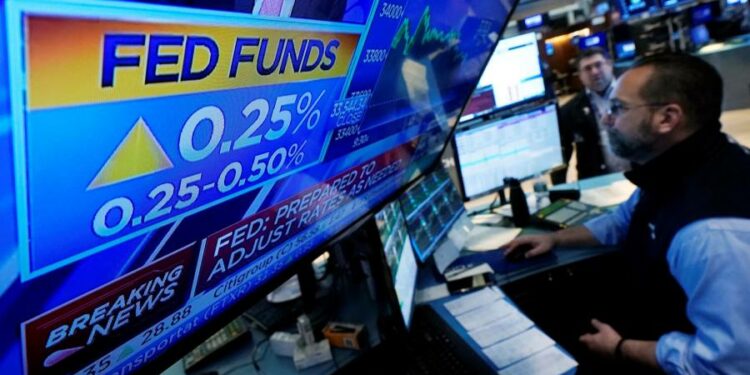Financial markets are full of convenient adages that work some of the time but not always, or that are broadly true but flawed when applied to a specific situation.
One is that stock pickers are optimists and bond investors are pessimists, making the bond market a better predictor of future distress.
When you buy a company’s stock, you are (to oversimplify somewhat) betting on positive outcomes for the company that will result in its value rising. Ergo, optimism.
When you lend a company money, you are typically betting on just one outcome; that the company will pay you back. The main thing that threatens you getting your money back is a company doing very poorly. That becomes the focus for bond investors. Ergo, pessimism.
Such pessimism can be useful for the rest of us. The bond market, and in particular the high-yield bond market where money is lent to riskier companies, is typically one of the first to flinch should economic conditions sour to the point of threatening corporate balance sheets.
Given everything worrying investors right now — from Russia’s invasion of Ukraine to rampant inflation and a hawkish Federal Reserve pulling the punch bowl away from investors by tightening monetary policy — they should be keeping a close eye on the high-yield bond market. But in recent periods of stress, it really hasn’t budged. Instead, the stock market has been most responsive.
Take this year. In January, the S&P 500 slipped into correction territory — defined as a move of more than 10 per cent lower from its recent peak. Meanwhile, high-yield bonds performed much better. The difference in yield on high-yield bonds and US Treasuries, a measure of the risk of lending to private companies versus the government, rose a little but remained well below any signal of distress. Why were credit investors not more concerned? Why aren’t they still?
It’s arguably because the stock volatility this year has not been about fundamental weakness in the economy but rather about resetting expectations over the Fed raising interest rates. If this is correct, credit has been flashing the right signal: that all is still fundamentally fine.
However, concerns about economic growth are emerging. The US yield curve inverted this week, with interest rates on long-dated bonds falling below shorter-dated debt. This is seen as a classic indicator of recession because it implies longer-term rates will need to be cut to fend off an economic downturn. Interest rate markets are also forecasting that the Fed will have to cut rates in a little over a year after aggressively raising them, pointing to fears that attempts to stamp out high inflation will choke economic growth.
Still, the high-yield bond market is broadly nonplussed.
There are explanations. Analysts note an array of measures suggesting the high-yield bond market is less risky than it used to be. For example, low rates have allowed companies to lock in cheap borrowing, increasing the likelihood that they will continue servicing their debts. Perhaps the market simply isn’t as recession sensitive as it once was.
“Most companies have a large buffer between current economic conditions and something that might significantly impair their ability to pay credit — so equities almost have to move first,” said Peter Tchir, global macro strategist at Academy Securities.
Matt Mish, a credit analyst at UBS, suggests that there will be stress in the loan market, which has been used by private equity firms to finance aggressive corporate buyouts. Data from S&P Global shows that the proportion of low-rated, single B and below corporate bonds has shrunk from around 80 per cent of the high-yield bond market in 2000 to just less than 50 per cent today. In contrast, that same proportion in the loan market has swelled from 50 per cent to nearly 80 per cent.
Yet, even here stress is unlikely to show up early given the vast majority of syndicated loans are held by structured investment vehicles called collateralised loan obligations, which lock up investors’ money and are less pressured to sell loans.
Are these changes in financial markets obfuscating once tried and true indicators of future turmoil? Possibly. Yet the most obvious conclusion remains that the risk of recession is simply still low for now.
Consumer balance sheets, in aggregate, remain strong. Labour markets are tight. If companies can weather inflation — and the Fed’s response to it — then maybe all will be well. S&P increased its default forecast to 3 per cent by the end of the year. That is still very low. For now, it seems the high-yield bond market is willing to shrug off current macro worries. Maybe there are some optimists in the bond market after all.
joe.rennison@ft.com











